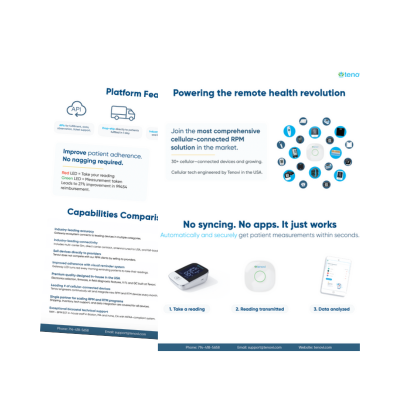Continuous physiological monitoring (CGM) has become a cornerstone in advancing patient care, particularly through wearable technologies that offer real-time insights into vital signs. This article examines research into continuous physiological monitoring. Drawing from a recent large-scale observational study published in the Journal of Clinical Medicine, we explore how the BioIntelliSense BioButton®, an FDA-cleared device, supports clinical decisions and improves patient outcomes.
Applications and Devices in Continuous Physiological Monitoring
Continuous physiological monitoring has gained widespread adoption in healthcare for its ability to provide continuous data about a patient’s health status, especially for chronic disease management and post-acute care. Devices like the BioButton are part of a growing category of continuous physiological technologies that include wearable Devices. These can include chest patches, wristbands, and skin-mounted sensors like the BioButton, VitalPatch, and Fitbit Health Solutions. These track heart rate, oxygen saturation, and skin temperature metrics.
Implantable Devices such as cardiac monitors are used for long-term monitoring of arrhythmias. Portable Monitors include blood glucose monitors and portable ECG machines that provide targeted physiological data. RPM technology is used extensively in chronic care management for conditions like heart failure, diabetes, and hypertension. It also plays a role in post-surgical care and rehabilitation by allowing clinicians to monitor patients remotely, reducing the need for frequent hospital visits.
Background on Continuous Physiological Monitoring
Traditional patient monitoring has relied on episodic data collection during hospital rounds or clinic visits. In contrast, continuous physiological monitoring provides uninterrupted tracking, enhancing the ability to detect subtle changes that might indicate health deterioration. Advances in sensor technology, miniaturization, and wireless communication have enabled wearable and portable devices to become an integral part of healthcare. These systems are often integrated with cloud-based analytics platforms, allowing healthcare providers to access and act on real-time data.
By leveraging continuous physiological monitoring, healthcare systems can address challenges such as:
- Delayed Detection: Spot-check monitoring often misses critical early signs of deterioration.
- Alert Fatigue: Algorithmic processing reduces unnecessary alarms.
- Resource Allocation: Continuous monitoring enables centralized care models, improving efficiency without sacrificing patient outcomes.
The Study at a Glance
The BioButton was evaluated in a retrospective observational study involving nearly 12,000 patients across two U.S. hospitals over 15 months. With continuous physiological monitoring of vital signs such as heart rate, respiratory rate, and skin temperature, the device collected over 651,000 hours of physiological data. Key findings of the study included the following.
- Reduced Length of Stay: Patients monitored with the BioButton experienced decreased length of stay from 3.07 to 2.75 days over 12 months.
- Timely Notifications: The device generated alerts for 73% of clinical deterioration events, with an average notification time of 14.8 hours before symptoms.
- Low Alert Fatigue: Notification rates were minimal (<1 per patient daily), helping reduce alert fatigue among healthcare providers.
Continuous Physiological Monitoring for Early Detection
The BioButton showed its ability to identify early signs of clinical deterioration. It uses algorithmic and rules-based analytics to provide actionable notifications for parameters like high respiratory rate (the most common indicator), heart rate increases, and combined trends. This continuous data stream enables earlier intervention, such as initiating treatments for conditions like sepsis or atrial fibrillation.
Improving Outcomes with Physiological Monitoring
The integration of continuous monitoring into medical-surgical units offers benefits in accuracy, actionable data, and patient safety. When it comes to accuracy, the BioButton readings showed high agreement with manually charted vitals, with biases as low as 2 beats per minute for heart rate.
In terms of actionable data, notifications led to 114 documented changes in clinical management, such as adjustments in medication dosages and new diagnoses. Finally, it detected trends often missed during periodic checks on patient safety. The BioButton provides clinicians with more reliable data, reducing reliance on intermittent and error-prone manual measurements.
Streamlining Clinical Workflows
Centralized monitoring was pivotal to the study’s success. A single nurse supervised up to 250 patients using the BioDashboard™, a cloud-based system that aggregates and analyzes data. This approach reduced bedside interruptions and allowed nurses to focus on high-priority cases flagged by the BioButton.
Understanding Continuous Physiological Monitoring
The BioIntelliSense BioButton is an example of the potential of continuous physiological monitoring to enhance care delivery. By enabling earlier interventions and providing precise, actionable data, this wearable device supports clinicians in improving patient outcomes and operational efficiency. As the healthcare industry continues to adopt digital health solutions, BioButton offers a model for integrating physiological monitoring into routine care.


